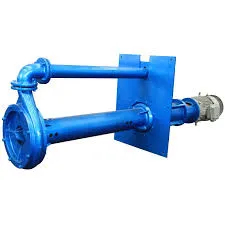English
- Afrikaans
- Albanian
- Amharic
- Arabic
- Armenian
- Azerbaijani
- Basque
- Belarusian
- Bengali
- Bosnian
- Bulgarian
- Catalan
- Cebuano
- Corsican
- Croatian
- Czech
- Danish
- Dutch
- English
- Esperanto
- Estonian
- Finnish
- French
- Frisian
- Galician
- Georgian
- German
- Greek
- Gujarati
- Haitian Creole
- hausa
- hawaiian
- Hebrew
- Hindi
- Miao
- Hungarian
- Icelandic
- igbo
- Indonesian
- irish
- Italian
- Japanese
- Javanese
- Kannada
- kazakh
- Khmer
- Rwandese
- Korean
- Kurdish
- Kyrgyz
- Lao
- Latin
- Latvian
- Lithuanian
- Luxembourgish
- Macedonian
- Malgashi
- Malay
- Malayalam
- Maltese
- Maori
- Marathi
- Mongolian
- Myanmar
- Nepali
- Norwegian
- Norwegian
- Occitan
- Pashto
- Persian
- Polish
- Portuguese
- Punjabi
- Romanian
- Russian
- Samoan
- Scottish Gaelic
- Serbian
- Sesotho
- Shona
- Sindhi
- Sinhala
- Slovak
- Slovenian
- Somali
- Spanish
- Sundanese
- Swahili
- Swedish
- Tagalog
- Tajik
- Tamil
- Tatar
- Telugu
- Thai
- Turkish
- Turkmen
- Ukrainian
- Urdu
- Uighur
- Uzbek
- Vietnamese
- Welsh
- Bantu
- Yiddish
- Yoruba
- Zulu
Telephone: +86 13120555503
Email: frank@cypump.com
Aug . 08, 2024 05:20 Back to list
Affordable Options for Septic Tank Pumps and Their Price Ranges for Every Budget
Understanding Septic Tank Pump Prices A Comprehensive Guide
Septic systems are integral components of many homes not connected to municipal sewer systems. They function by collecting, treating, and disposing of wastewater on-site. A crucial part of the septic system is the septic tank, which requires regular maintenance, including pumping out accumulated sludge and scum. Understanding septic tank pump prices is essential for homeowners to budget effectively for this important service.
What is Septic Tank Pumping?
Septic tank pumping involves the removal of solid waste and sludge that accumulates within the tank over time. The frequency of pumping depends on various factors, including tank size, household size, and the amount of wastewater produced. On average, a septic tank should be pumped every 3 to 5 years to maintain optimal functioning and to avoid costly repairs or system failure.
Factors Affecting Pumping Prices
1. Local Market Rates The cost of septic tank pumping varies significantly based on geographical location. Urban areas may have higher prices due to increased labor costs and regulatory requirements, while rural areas may offer more competitive pricing.
2. Tank Size The volume of the septic tank is a critical factor in determining the cost of pumping. Larger tanks typically cost more to pump due to the increased time and resources required. Standard residential septic tanks range from 1,000 to 2,500 gallons, and prices can vary accordingly.
3. Accessibility If the septic tank is difficult to access due to landscaping, distance from roads, or other logistical challenges, the pumping service may charge an additional fee. Clear access significantly reduces the time and effort involved in the pumping process.
septic tank pumps prices

4. Additional Services Some services may offer additional maintenance or inspections during the pumping, such as checking filters or assessing the tank's integrity. This can add to the total cost, but may prevent further issues down the line.
5. Emergency Services If pumping is needed due to a failure or backup, costs may increase. Emergency services typically command higher rates, so homeowners are encouraged to schedule regular maintenance to avoid such situations.
Typical Pricing
While prices can vary widely based on the factors mentioned above, homeowners can expect to pay between $200 to $500 for septic tank pumping. On average, residents spend around $300 for standard service on a 1,000 to 1,500-gallon tank. It is advisable for homeowners to get quotes from multiple providers to ensure they are receiving a fair price and quality service.
Long-Term Cost Considerations
Investing in regular septic tank pumping can save homeowners money in the long run. Neglecting to maintain the system can lead to severe backups, costly repairs, or even the need for complete system replacement. The average cost of replacing a septic system can range from $3,000 to $7,000, making regular maintenance a wise financial decision.
Final Thoughts
Septic tank pumps are a vital part of maintaining a healthy home wastewater system. Understanding the factors that influence septic tank pump prices can help homeowners make informed financial decisions while ensuring their septic system functions efficiently. By budgeting for regular pumping and maintaining the system, homeowners can avoid costly repairs and prolong the life of their septic systems. Remember, a well-maintained septic system is not only good for your wallet but also for the environment.
-
Horizontal Split Case Pump with GPT-4 Turbo | High Efficiency
NewsAug.01,2025
-
ISG Series Pipeline Pump - Chi Yuan Pumps | High Efficiency, Durable Design
NewsAug.01,2025
-
Advanced Flue Gas Desulfurization Pump with GPT-4 Turbo | Durable & Efficient
NewsJul.31,2025
-
ISG Series Vertical Pipeline Pump - Chi Yuan Pumps | Advanced Hydraulic Design&Durable Construction
NewsJul.31,2025
-
ISG Series Vertical Pipeline Pump - Chi Yuan Pumps | Energy Efficient & Low Noise
NewsJul.31,2025
-
pipeline pump - Chi Yuan Pumps Co., LTD.|High Efficiency&Low Noise
NewsJul.31,2025










